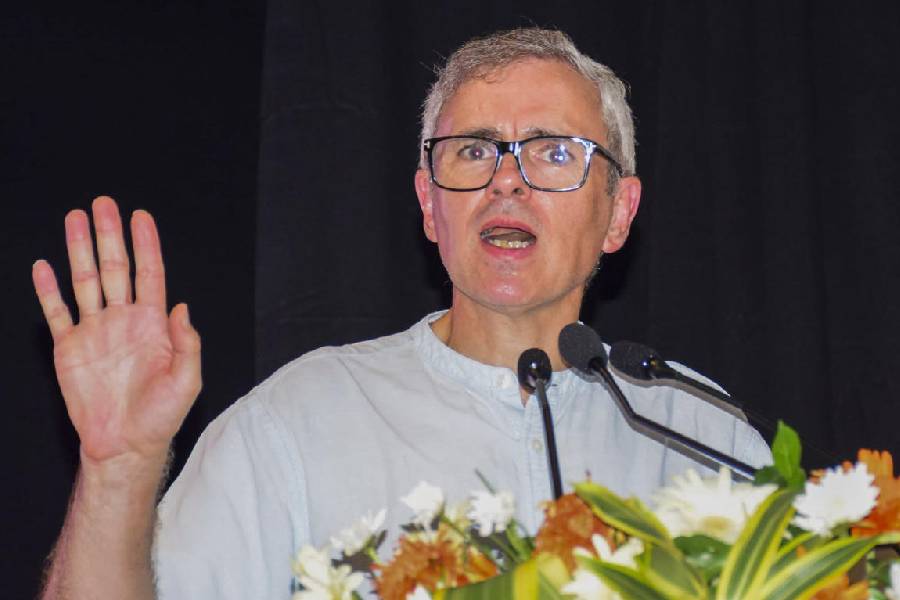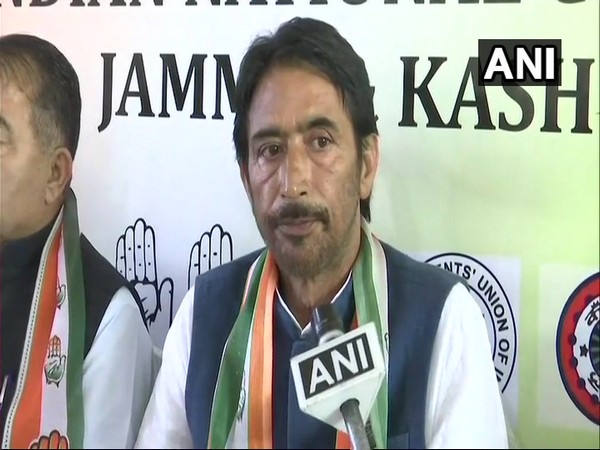‘Leave it now, the hope has gone…’ — Omar Abdullah’s Stark Words Reflect Kashmir’s Growing Disillusionment
By: Javid Amin | 22 Aug 2025
A Sobering Moment in Kashmir’s Political Journey
At the 56th Raising Day of Sainik School, Nagrota, Jammu & Kashmir Chief Minister Omar Abdullah stood before a gathering of cadets, teachers, and dignitaries. What was expected to be a ceremonial event turned into one of the most politically charged speeches of recent months.
With uncharacteristic bluntness, Omar Abdullah declared:
“Leave it now, the hope has gone…”
These words, delivered with a mix of frustration and resignation, were not just personal reflections but a powerful echo of the collective mood across the Valley and beyond. The statement came after the Monsoon Session of Parliament concluded without any mention of the restoration of statehood to Jammu & Kashmir—a promise that has loomed large since the abrogation of Article 370 in August 2019.
For many Kashmiris, this omission reinforced a growing sense of betrayal. For the opposition in J&K, it became a moment to pivot from waiting to mobilizing. And for India’s democracy, it posed uncomfortable questions about trust, federalism, and constitutional integrity.
This article takes a deep dive into Omar Abdullah’s statement, unpacking the history, the politics, the public sentiment, and the potential consequences of this turning point.
The Historical Context: From Article 370 to Today
To understand the weight of Omar Abdullah’s words, one must revisit the trajectory of J&K politics over the last six years.
1. The Abrogation of Article 370 (2019)
On 5 August 2019, the Government of India revoked Article 370 and Article 35A, dismantling J&K’s special constitutional status. Simultaneously, the state was bifurcated into two Union Territories: Jammu & Kashmir (with a legislature) and Ladakh (without a legislature).
The decision was historic, controversial, and divisive. While the Centre hailed it as a step towards “full integration” of J&K with the rest of India, large sections of Kashmiris viewed it as a breach of trust and constitutional guarantees.
2. Promise of Statehood
In the aftermath, senior leaders in the Union Government—including Prime Minister Narendra Modi and Home Minister Amit Shah—assured the people of J&K that statehood would be restored “at an appropriate time.”
-
2020: Union Ministers reiterated that statehood was on the agenda but linked it to “normalcy.”
-
2021: The Prime Minister, in an all-party meeting, promised that “statehood will be restored at the right time.”
-
2022-2023: Repeated statements were made in Parliament and public forums, but without timelines.
3. The Supreme Court Verdict (December 2023)
In December 2023, the Supreme Court upheld the abrogation of Article 370 but also directed the Centre to restore statehood to J&K as soon as possible.
This was widely seen as a judicial acknowledgment of the constitutional gap created by prolonged Union Territory status. Yet, as Omar Abdullah’s speech highlighted, ten months later, no steps have been taken.
Omar Abdullah’s Speech: Breaking It Down
The CM’s statement carried multiple layers of meaning. Let’s unpack them one by one.
1. No Mention in Parliament
The Monsoon Session ended with no reference to statehood—despite public expectations and political speculation. This silence was telling. For the people of J&K, it was another reminder that their aspirations remain low on Delhi’s priority list.
2. Broken Promises
Omar Abdullah’s phrase—“We had hoped this would not be needed…”—directly points to the erosion of trust. When repeated assurances are made and not delivered, the result is political fatigue and public disillusionment.
3. Door-to-Door Signature Campaign
By announcing a door-to-door campaign across all 90 Assembly constituencies, Omar has shifted the battle to the people’s court. Collecting signatures to submit before the Supreme Court is both symbolic and strategic:
-
Symbolic, because it reflects grassroots involvement.
-
Strategic, because it positions the demand within the judicial framework, bypassing political stonewalling.
4. Warning on Disqualification Law
Omar also warned against the misuse of a proposed ministerial disqualification law, which seeks to bar ministers facing arrests or criminal charges. His concern: the law could become a political weapon against the opposition.
His remark—“You will not remain in power forever. The very law you use today could be used against you tomorrow”—was both a warning to the BJP and a reminder of democratic accountability.
Political Undercurrents: What’s Really at Stake?
The debate around J&K’s statehood is not just about administrative status—it is about identity, trust, and democratic participation.
1. Erosion of Federal Principles
J&K’s continued Union Territory status undermines India’s federal structure. Unlike Delhi or Puducherry, J&K had historically been a full-fledged state with unique constitutional safeguards.
2. Opposition Unity in J&K
Parties like the National Conference (NC), People’s Democratic Party (PDP), and even smaller regional outfits see the delay as a common grievance. Omar Abdullah’s campaign could potentially unify them under a single banner of “Restoration of Statehood First.”
3. Centre’s Calculations
From Delhi’s perspective, delaying statehood could be a political strategy—allowing the BJP to retain greater control in the region while consolidating its electoral presence. But the longer the delay, the greater the alienation.
Public Sentiment: From Hope to Disillusionment
Conversations on the ground in Kashmir reflect a gradual shift:
-
2019-2020: Shock and anger over abrogation of Article 370.
-
2021-2022: Cautious hope that statehood would be restored.
-
2023: Supreme Court’s directive raised expectations.
-
2024: Growing frustration as promises remain unfulfilled.
Omar Abdullah’s statement resonated precisely because it voiced what ordinary Kashmiris feel—that hope is fading, and silence from Delhi feels like deliberate disregard.
Why This Matters for India
The issue of J&K’s statehood goes beyond regional politics. It has national implications:
-
Democratic Credibility: Ignoring Supreme Court directives undermines India’s image as a rule-of-law democracy.
-
Integration vs. Alienation: Prolonged delay risks further alienation, especially among youth.
-
Federal Balance: Weakening states’ autonomy sends worrying signals to other regions too.
The Road Ahead: Scenarios
-
Optimistic Scenario: The Centre announces a roadmap, with timelines for elections and statehood, rebuilding trust.
-
Status Quo Scenario: Delay continues, leading to greater alienation and political mobilization by opposition.
-
Conflict Scenario: If mass movements escalate, tensions could rise, drawing international scrutiny once again.
Bottom-Line: A Watershed Moment
Omar Abdullah’s statement may come to be remembered as a watershed moment—when the politics of waiting gave way to the politics of mobilization.
Whether the signature campaign becomes a historic turning point or just another symbolic protest will depend on how both Delhi and Srinagar respond.
But one thing is clear: the patience of J&K’s people is wearing thin, and silence from the Centre is only deepening disillusionment.



